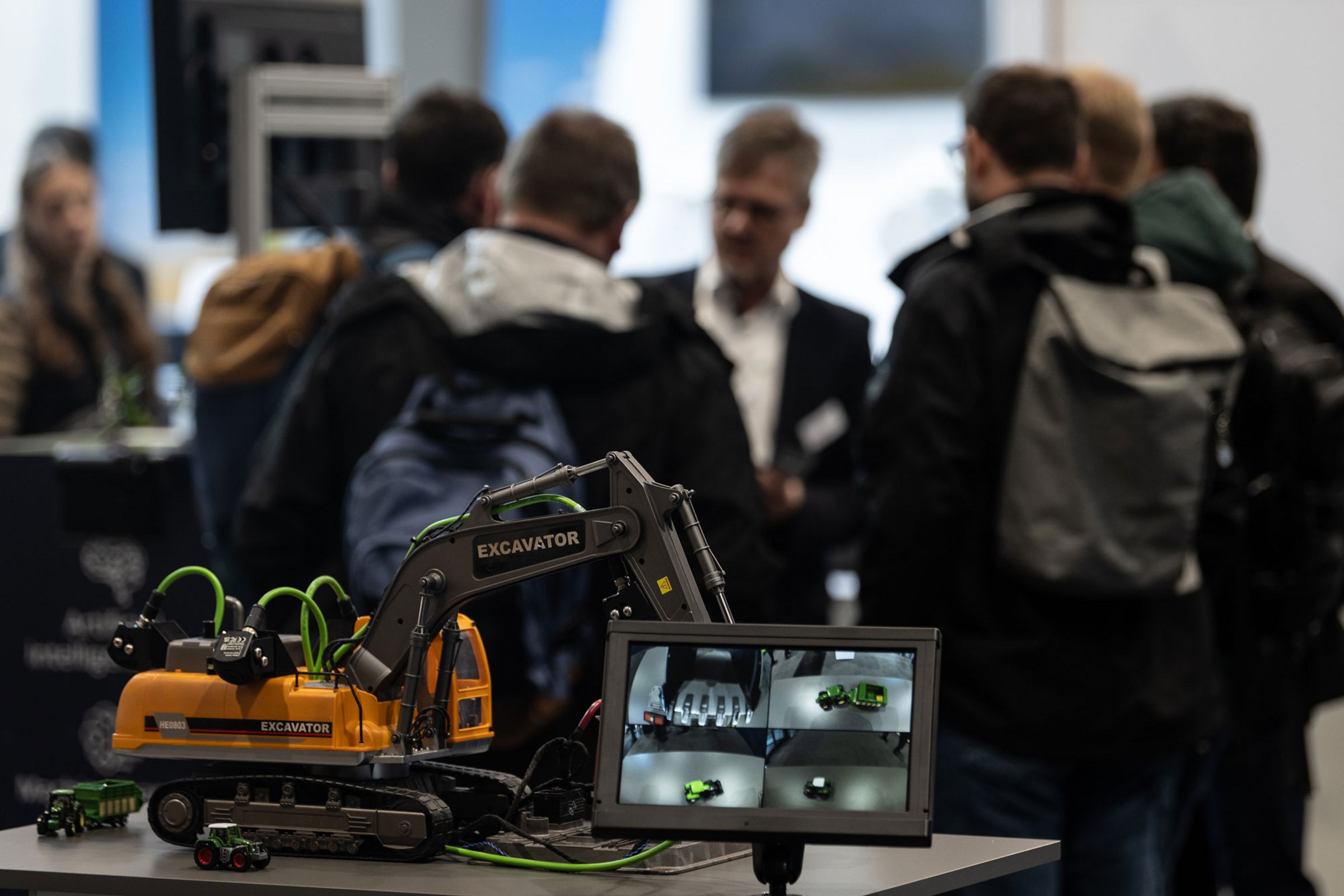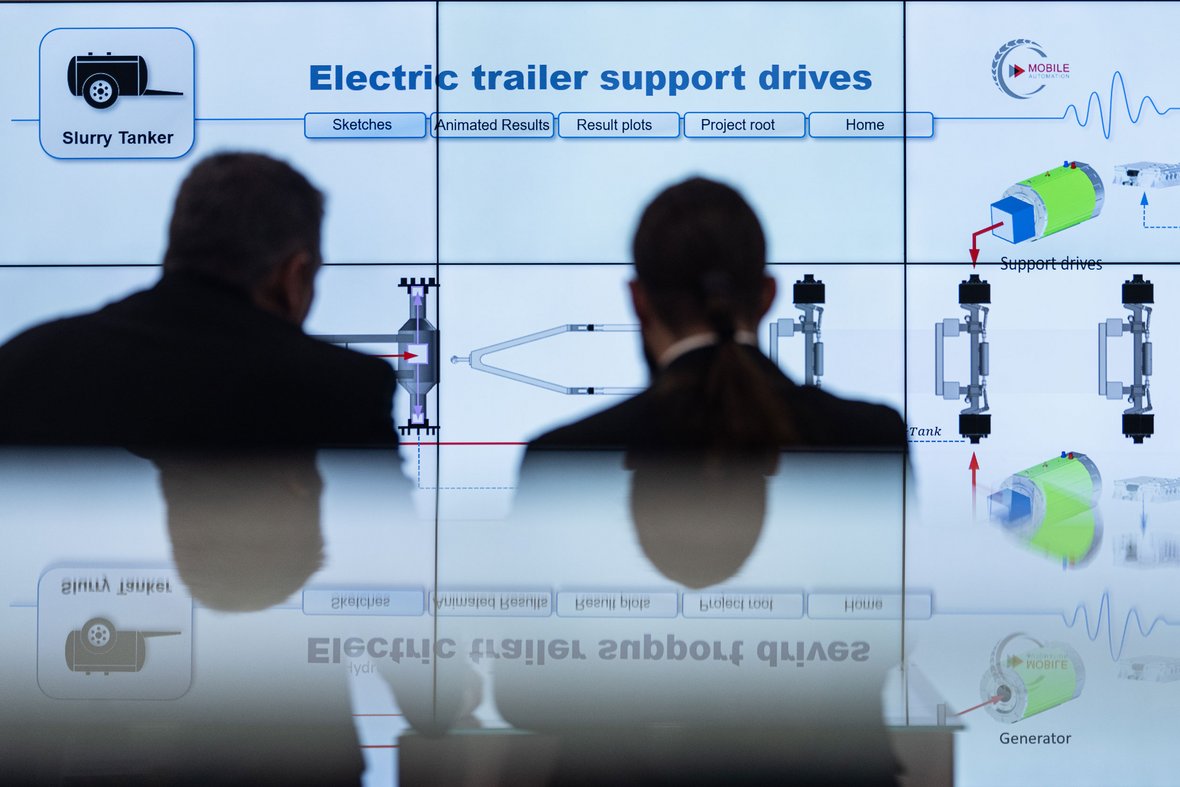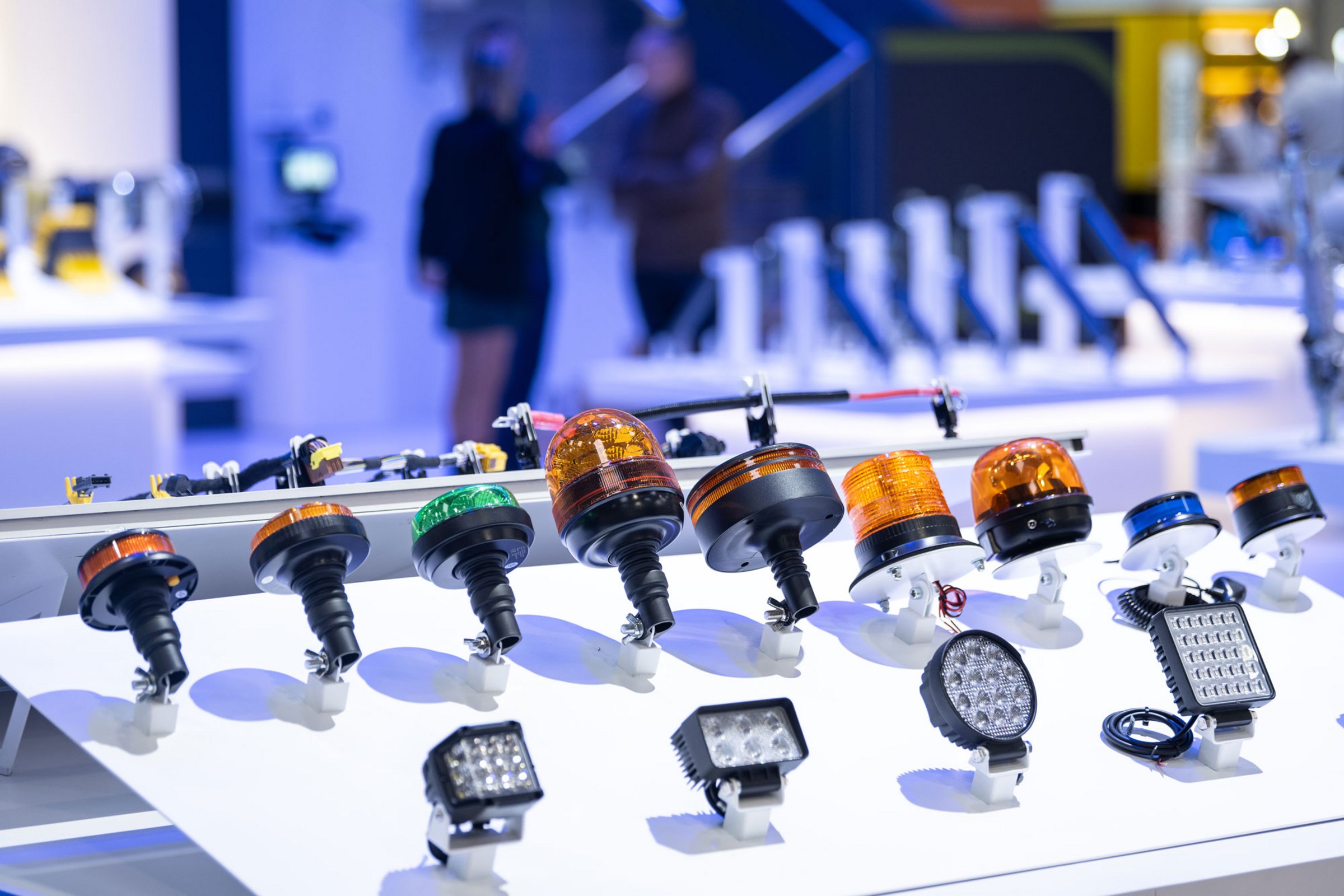Production-ready assistance functions for mobile working machines
The off-highway industry, which includes agricultural machinery, is increasingly relying on mobile machines that are highly connected and semi-autonomous. At the same time, the demand for assistance systems that relieve the operator is growing. High-performance controllers with AI integration, robust sensors, communication modules, and extensive cloud services work seamlessly together to enable innovative functions that meet the demanding requirements off-road. With their expertise, the exhibitors at Systems & Components from 9 to 15 November also aim to provide a sustainable response to the looming shortage of skilled workers.
Whether it's rough terrain or changing weather conditions – many decisions in off-highway operations must be made in a very short time span to ensure smooth workflows. In agricultural settings, this poses an additional challenge: drivers often have to operate two machines simultaneously, significantly increasing the time required for frequently repeated tasks that demand full attention.
“Autonomous functions can be a great support for operators,”
says Petra Kaiser, Brand Manager of SYSTEMS & COMPONENTS at DLG (German Agricultural Society).
“The wide variety of different working machines on the market leads to a high demand for modular and flexible assistance systems, which is reflected both at the booths and in the presentations on the Expert Stage at SYSTEMS & COMPONENTS,”
says Kaiser.

Functions for enhanced productivity and safety
Supporting the operator in the cab is expected to be a central topic at the exhibition grounds in Hanover, as well as at Agritechnica, the largest agricultural trade fair for agricultural machinery, held in parallel. Advanced assistance systems, with their smart sensors and intuitive control devices, are designed for both experienced and non-specialist drivers. “The goal is, not least, to fully exploit the potential of mobile working machines to make them even more productive,” emphasizes Kaiser. Unlike road vehicles, off-highway machines aim to automate tasks. Highly repetitive tasks are therefore the first candidates for assistance functions.
The range of solutions for more productive and safer work processes includes, for example, simplified leveling, payload measurement in handling operations, electronic vibration damping, and various motion controls, such as for wheel loaders and telehandlers. These functions not only provide direct work support, such as sensing the bucket load of excavators, but also contribute to collision warnings or front and rear protection. If the systems detect objects, including people, in the danger zone, they issue acoustic and/or visual warnings and display the objects on the screen – allowing the operator to keep an eye on blind spots even in weather conditions with poor visibility.

Intelligent helpers in the cab
The demand for higher productivity along with the current shortage of qualified personnel are primarily driving the development of more assistance functions. Vehicle manufacturers and OEMs must anticipate this trend in the design of Human Machine Interfaces (HMI). Ergonomic joysticks with multidimensional optical and haptic feedback, as well as high-resolution, high-contrast, glove-operable displays with unambiguos visualizations, ensure an intuitive user experience.
The next development stage of HMI concepts is already emerging at Systems & Components: user interfaces based on Extended Reality (XR) technologies. These allow digital terrain models to be precisely integrated into the real-world situation or the machine status to be displayed directly in the operator’s field of view.
Moreover, XR technologies are intended to increase trust in the interaction with the machine. The task: to involve the operator from the beginning so that also less experienced individuals can quickly become familiar with a new machine. This is where self-learning assistance systems come into play, identifying specific areas for improvement. Using the machine’s existing sensors, measurements can be taken during operation to provide immediate feedback in the cab – teaching optimal working techniques in real time. Thanks to this dialog-based approach, the operator is actively involved in all optimization measures. The systems also show videos on how to shorten driving paths, set correct bucket angles, reduce dump heights, or use lift-end stop settings. This turns the assistance systems into an onboard training program for excavators, dump trucks, or crawlers.
Let the Machine Do the Work
Assistance systems not only increase work efficiency on construction sites. Agricultural machines such as combines and self-propelled forage harvesters are now also equipped with comprehensive technology packages that automatically adjust driving speed to the current engine load and preset target values – ensuring maximum productivity during harvesting. In addition, stereo camera systems are used to automatically control the rotation and flap position of the discharge chute.
Transport vehicles are detected, and harvested produce are placed precisely to ensure optimal filling. The systems also assist in switching between field operation and road travel with key functions such as activating warning lights, engaging all-wheel drive, adjusting engine speed, and positioning the discharge chute.
But how do you turn a tractor and implement into a team that works together optimally? A key role is played by Tractor Implement Management (TIM). This technology, developed based on ISOBUS, enables bidirectional communication between tractor and implement – and is considered a cornerstone of precision farming. Whereas the tractor used to be the dominant element in the agricultural process, now, through machine-to-machine communication (M2M), the sensor and control architecture of the implement takes the lead.

Tractor and Implement Become One
The "intelligence" of the towed implement tells the tractor how much power is needed—from accelerating to reducing or increasing engine speed, all the way to braking. A field sprayer, for example, can control the speed of the towing vehicle to minimize potential drift of crop protection products. Special function extensions allow an implement to control the lift system and the PTO shaft, for instance, to automatically adjust the working depth based on application maps. This means deep soil cultivation only takes place where it is actually needed. This protects the soil and saves fuel, a step toward sustainable agriculture.
All of this shows: digitalization and connectivity in the off-highway sector are opening up new possibilities for designing assistance systems, while at the same time increasing complexity. Algorithms are taking over more and more functions, making operation more comfortable and work safer. As a result, mobile working machines require high-performance computers to effectively process the vast amount of sensor data. “The fusion of camera-based sensors, electric actuators, and the integration of cloud and satellite services is a major challenge for machine manufacturers,” confirms Kaiser.
Autonomy on the rise
Against this backdrop, smart sensor systems are at the top of the technology providers’ roadmaps, as they allow maximum flexibility in installation and application. Manufacturers of mobile working machines thus receive a functional basic toolkit with which they can design their own assistance systems according to the plug-and-play principle—tailored to their specific requirements. The sensor kits shown in Hanover consist of various ultrasonic, radar, and multi-camera systems. Their range of functions includes, for example, blind spot monitoring, object detection, and maneuvering assistance.
Moreover, it is only the powerful edge controllers and embedded multi-core processors of the latest generation that enable the integration of AI-based functions. In addition to 360-degree surround monitoring with person detection, an additional camera system can be used for AI-supported process optimization. Via CAN, the systems can be connected to the internal bus systems of the vehicles, and with multi-band GNSS, RTK (Real Time Kinematic) is available. This allows mobile working machines to be navigated with centimeter-level precision. From 9 to 15 November, Systems & Components will offer a preview of what can be expected in the off-highway sector in the coming years—and how the next level of autonomy can be reached.
